Turbo-Charge Your Revenue!
You’ve probably already considered selling on Amazon but its way easier than you think.
Call Us Now
Amazon is indisputably the largest ecommerce marketplace, with over 2.5 million third-party sellers on the platform. With millions of brands on Amazon, how does one stand out?
In September 2018, Amazon launched a powerful tool called the Amazon Storefront to help businesses differentiate their products and grow their brand.
What is an Amazon storefront? An Amazon storefront is a mini-website that allows registered businesses under the Amazon Brand Registry to showcase their branded products using images, videos, graphic designs, and so much more in a single location. With Amazon storefronts, customers can directly link to your store without distractions from competitors.
So, how do you get started? Well, it's not enough to just put up all your products in one place. Your Amazon storefront must be functional and high-converting. You must develop an effective action plan to increase sales in retail using your Amazon storefront.
What better way to build your Amazon storefront than to get some ideas from a few successful brands? In this article, we will look at a few brands that are crushing it with their Amazon storefronts to give you some ideas that will help you build your Amazon store.
Here are ten Amazon storefront examples to get you inspired:
We are starting with Amazon’s flagship brand - Amazon Basics. Considering Amazon is the creator of the storefront feature, there are one or two things we can learn from them about building an Amazon brand storefront. Getting on their homepage, Amazon Basics welcomes customers with a clean and clear layout using bright images and simple colors.
They utilize smaller grids to give customers a bit of everything that they sell - from kitchenware to office furniture, cables, garden and outdoor, and kids' and baby products. The storefront makes you feel like you have arrived at your one-stop shop for getting any household product. The site is easy to navigate, making the selection of products less overwhelming.
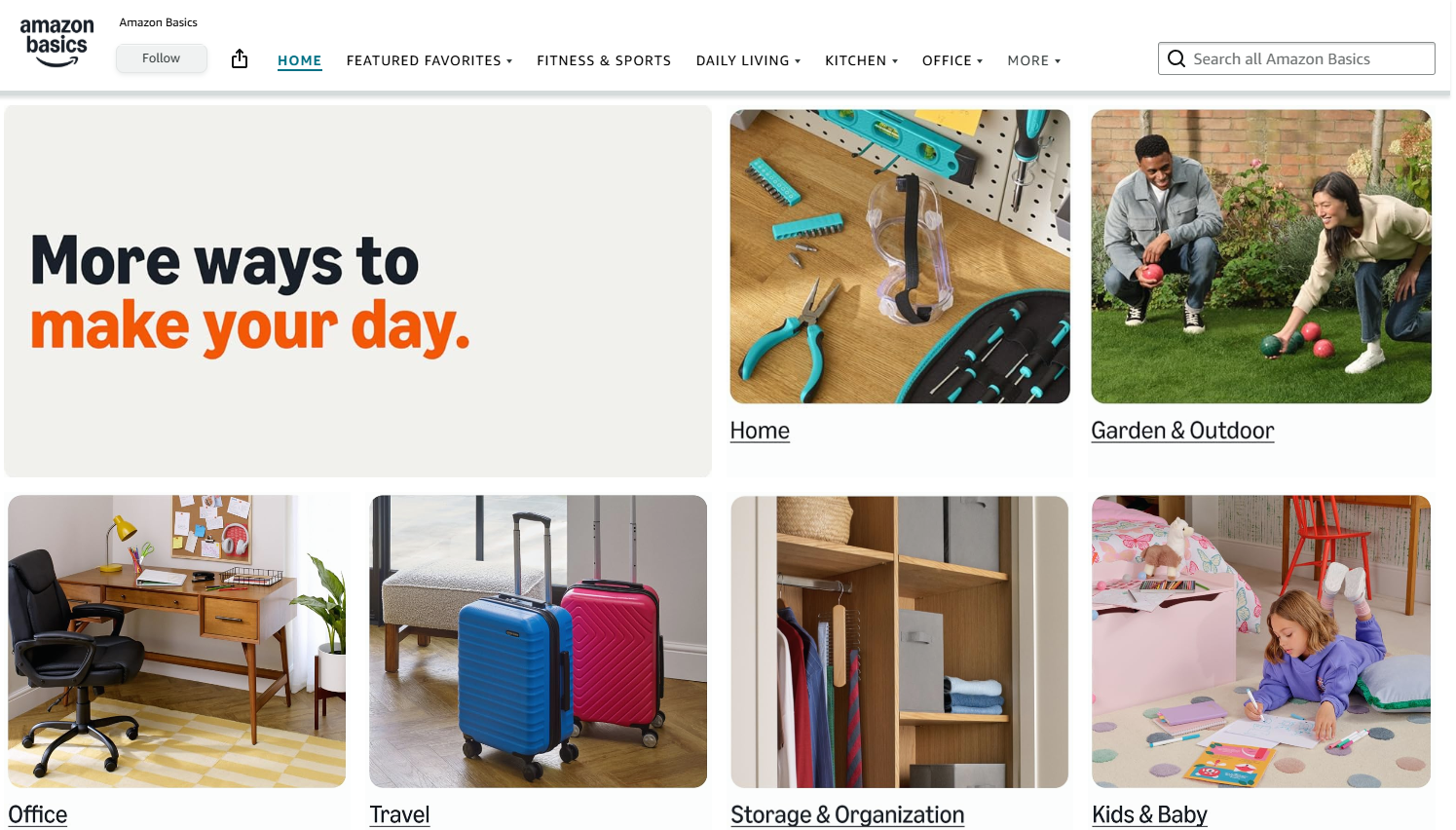
If you are looking for how to create an Amazon storefront for different audiences, Lego is a great example to follow. Their colorful banner image welcomes you to their store and features different categories that allow you to shop based on themes, age, latest releases, and so on. What makes this storefront unique is that it features different colors and fonts for its target audiences. For kids, they use fun and bright colors like red, blue, and yellow themes. For adults, they beat the colors down using white, black, and red themes.
To build an Amazon storefront, it is important to consider your target audience and figure out what type of design best resonates with them. Lego also offers unique product recommendations based on your browsing history. This is one effective way to give customers exactly what they are looking for and increase sales on Amazon.
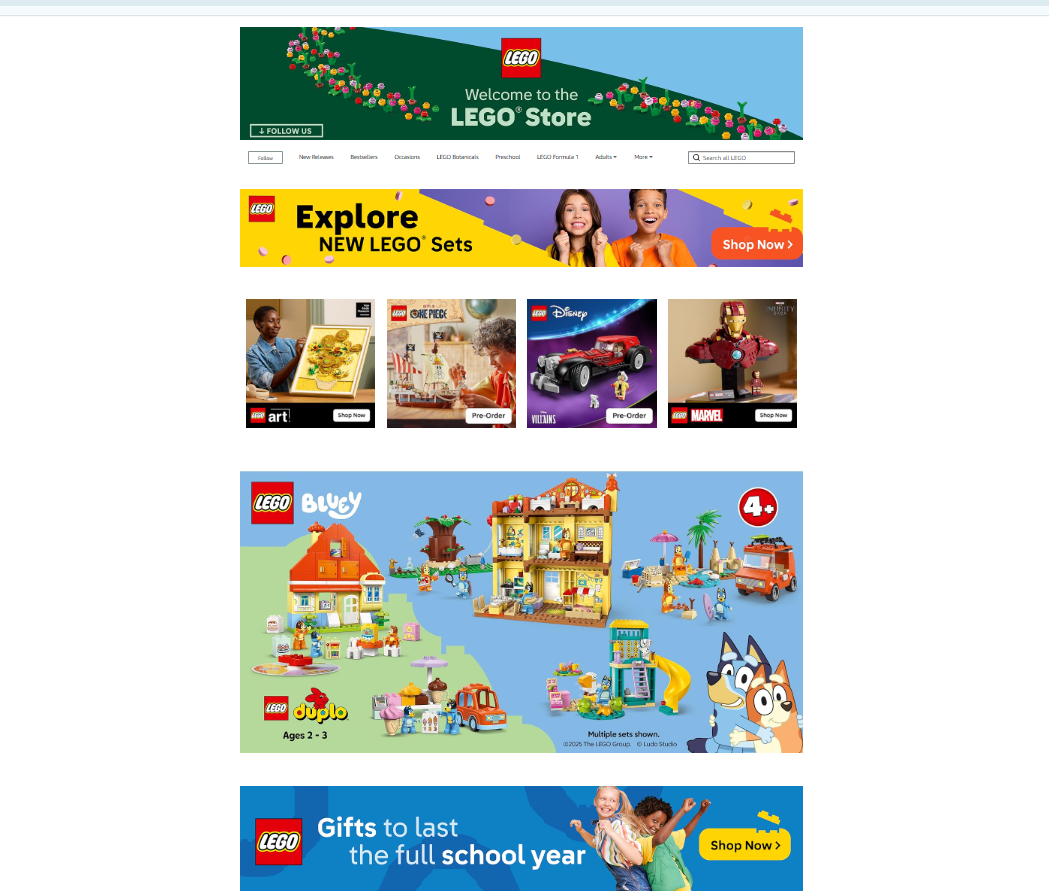
Malibu C is a hair wellness brand that is 100% vegan and eco-friendly. Their homepage welcomes you with a lifestyle video of their product that plays in a loop. The store features four elements that state what makes their product unique. This includes eco-friendly, vegan, and plant-based. The entire storefront gives customers a solution to the problem of dull hair. The store uses cool colors of light blue and white. It also features some of their products and prices you can shop right away.
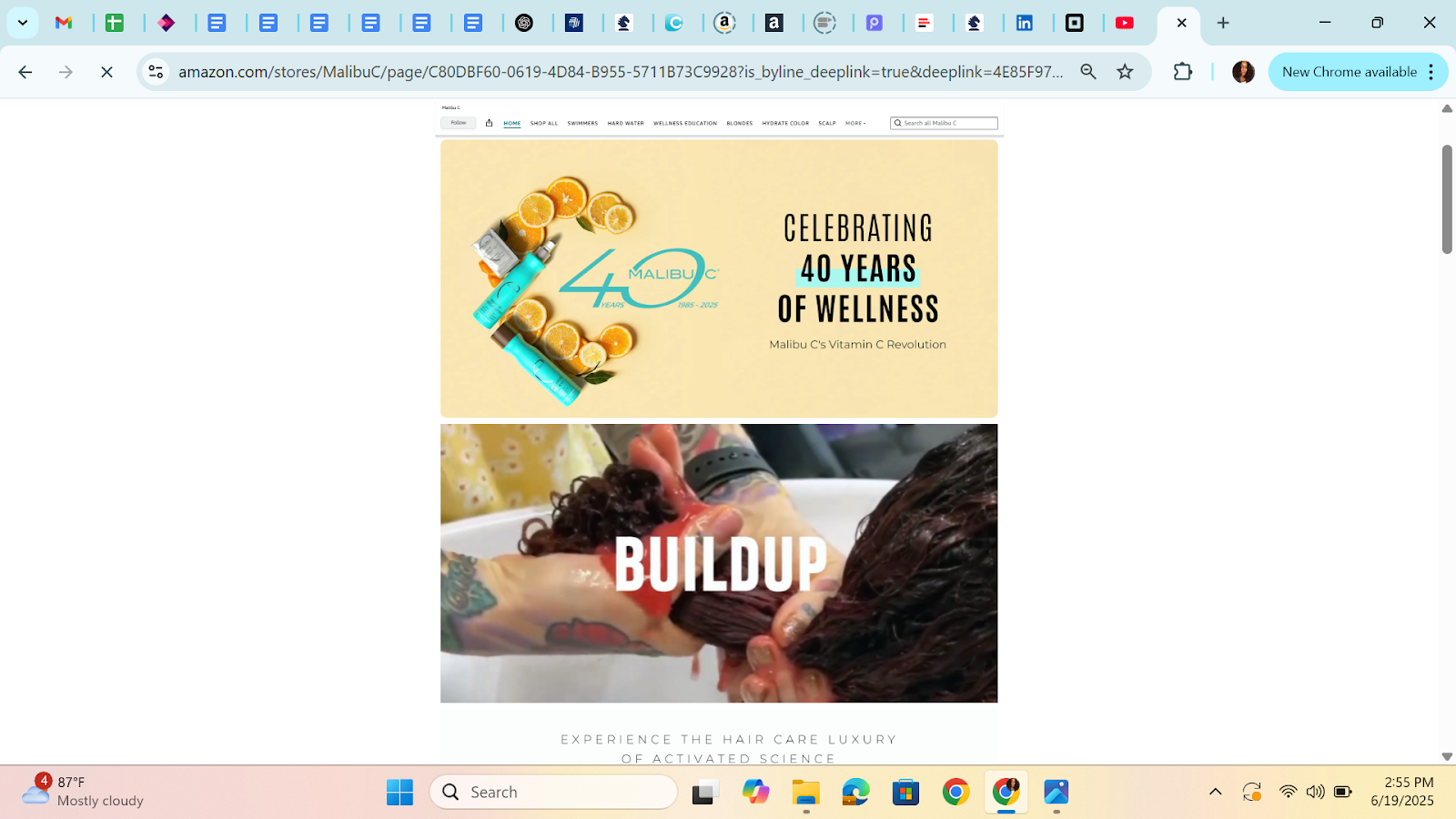
Apple is a top brand recognized globally for high-quality gadgets. Apple’s Amazon storefront maintains its brand color and makes use of whitespaces for highlighting displayed products. They maximize the store’s space, displaying broad product categories that direct you further into the store. Each product comes with bold text descriptions and high-quality images highlighting the features and model of their products. The site is easy to navigate and makes use of more images than text.
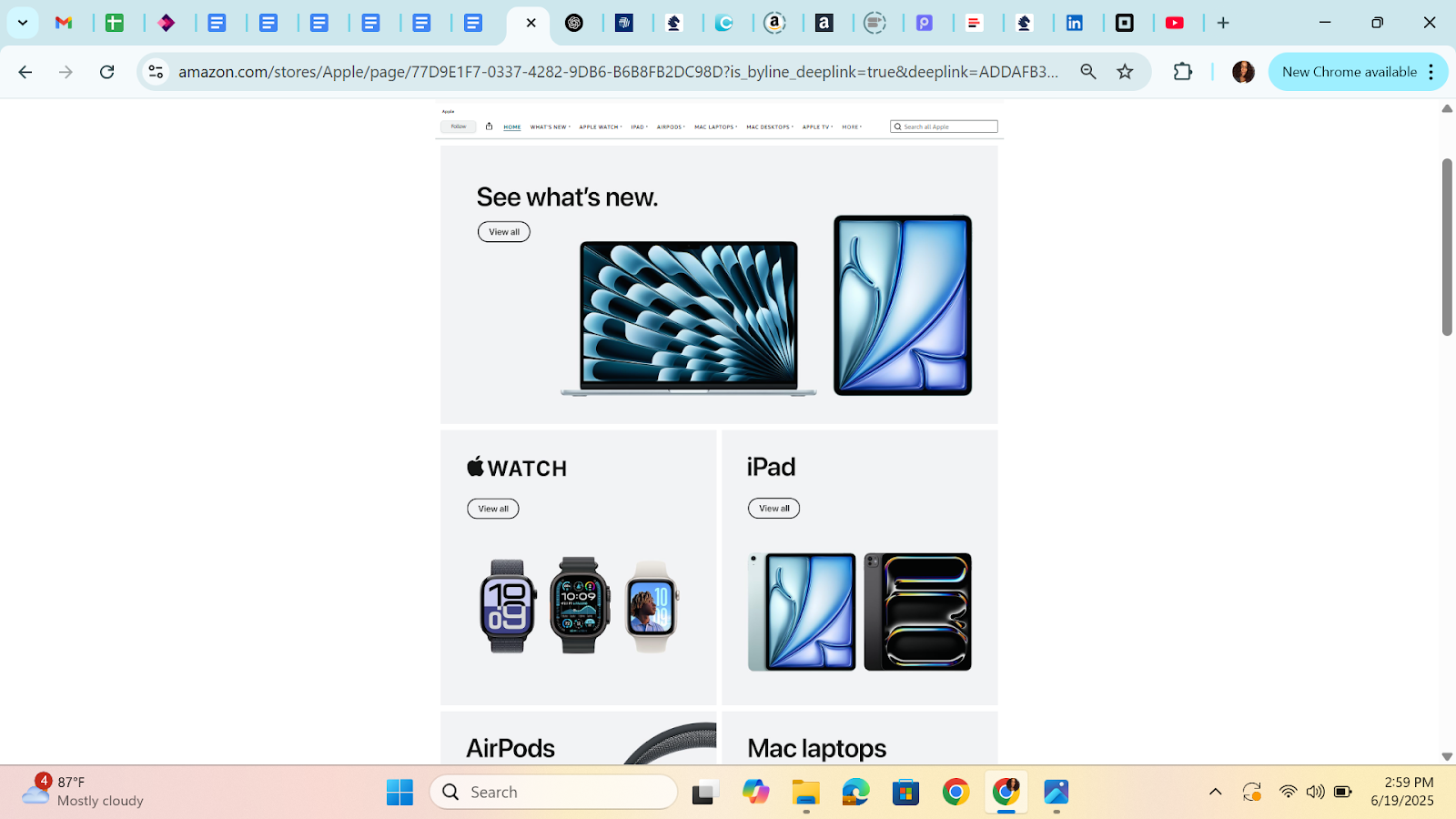
This brand offers a board line for athletes and enthusiasts of diverse age groups and levels. This storefront creatively combines images and videos that communicate the value of the products. The color and theme are bright and subtle, giving customers a feeling of being outdoors.
It also shows customers how to use their products for fitness. The brand highlights its history, values, and elements that make its products unique. They also take advantage of the shoppable image model, allowing customers to add items to their cart right away while showcasing beautiful lifestyle images.
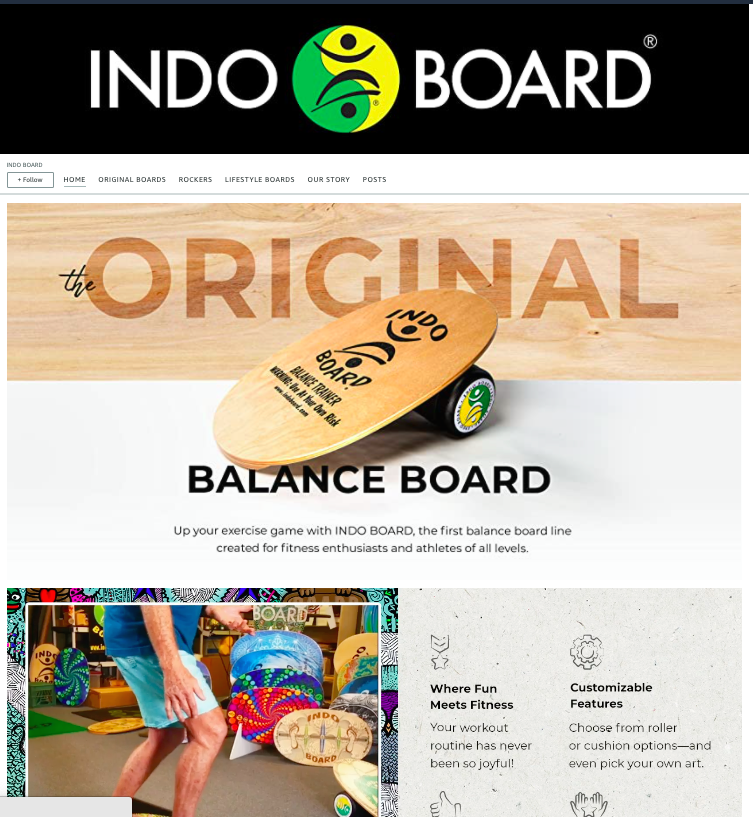
La Colombe is a coffee brand with about 30 cafes around the United States. They display rich and unique flavors of coffee using a fine combination of images and texts. The images come with a text overlay highlighting the key elements of each beverage. For example, the Pumpkin Spice Draft Latte comes in an enticing image, drawing customers to the product. The text overlay gives customers information on the product name, the type of beverage, and the sugar and caffeine content. The top navigation displays various categories for an easy shopping experience.
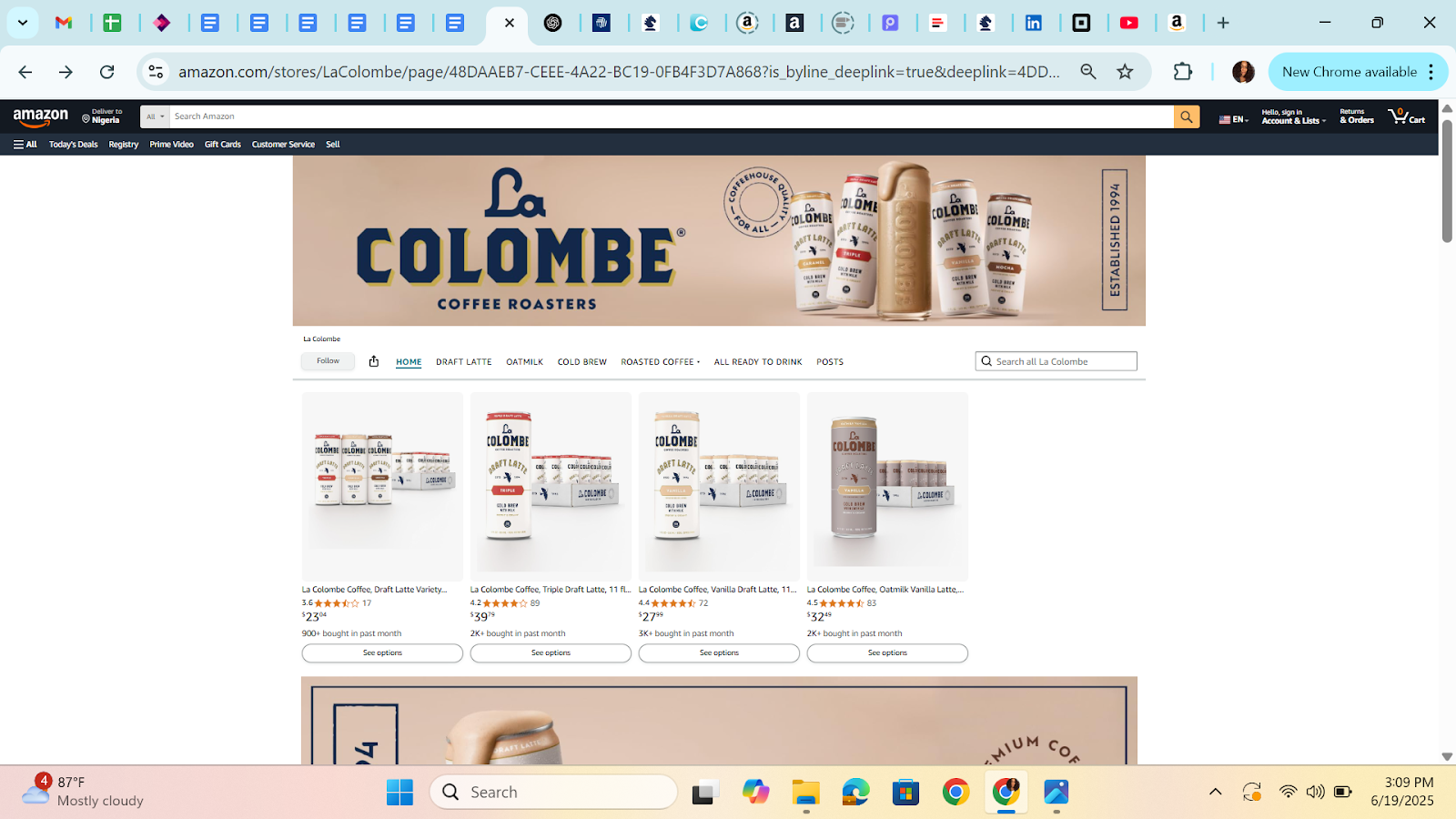
Clarks is a footwear brand that offers high-fashion footwear as well as high-tech manufactured footwear for health-related issues. The store displays bold images and text overlays highlighting their product offerings (new arrivals, casual boots, winter boots, and casual shoes).
Clark’s Amazon storefront uses a simple layout using light colors of pink, blue, and yellow. The store also displays a wide range of products and prices available at Clarks. The navigation tabs at the top page display various product categories for easy navigation.
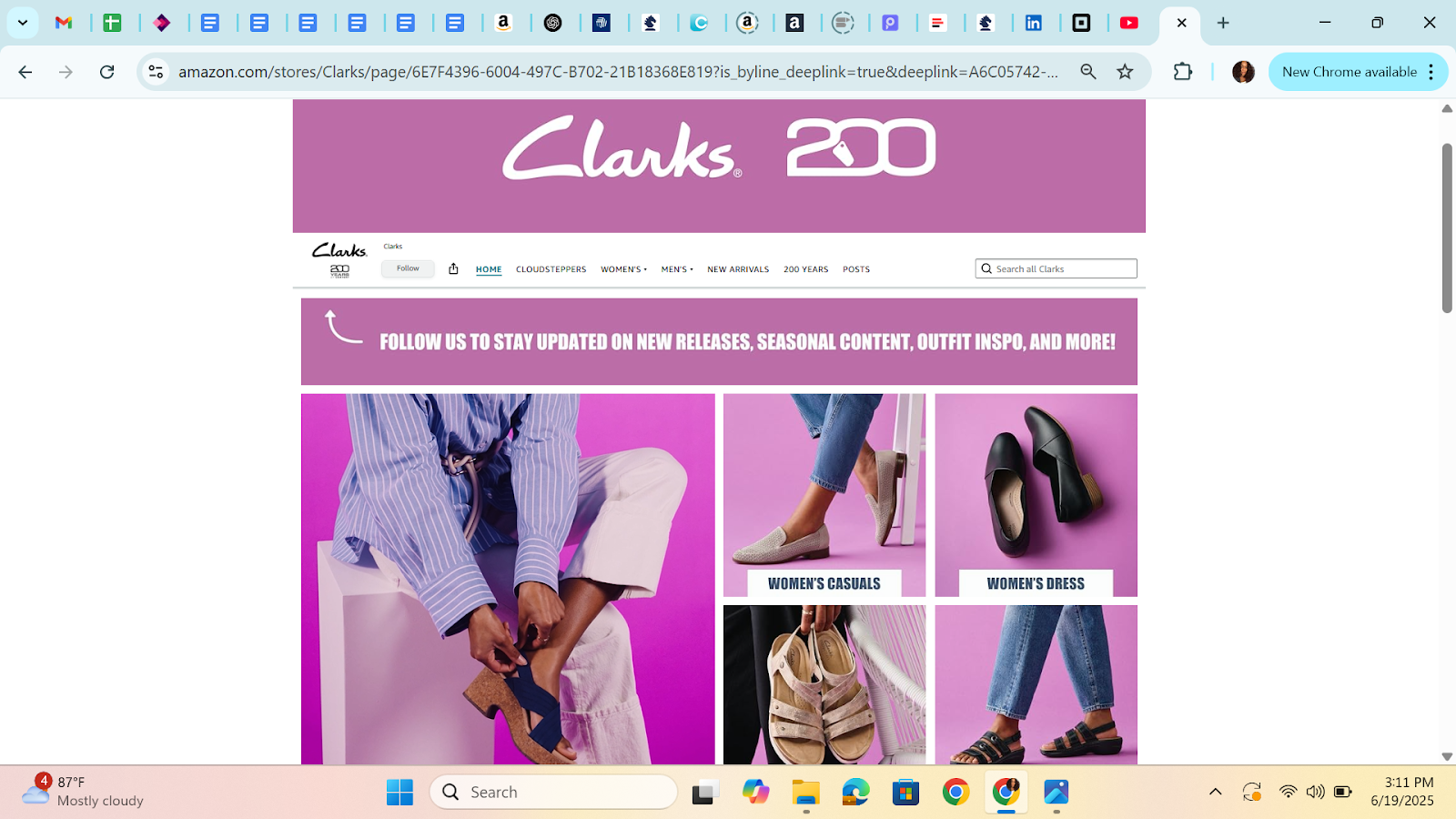
Callaway offers a wide range of golf equipment, including golf clubs, balls, gloves, etc. Their homepage welcomes you with their brand logo and leads you to the navigation bar for an easy shopping experience.
Callaway uses high-quality images with a focus on the logo. This allows for easy brand recognition. When new customers come to your store, it is important to make your brand recognizable using your logo, unique colors, and so on. Callaway uses the big grid template that makes it easy to zoom into their products and still click to shop right away.
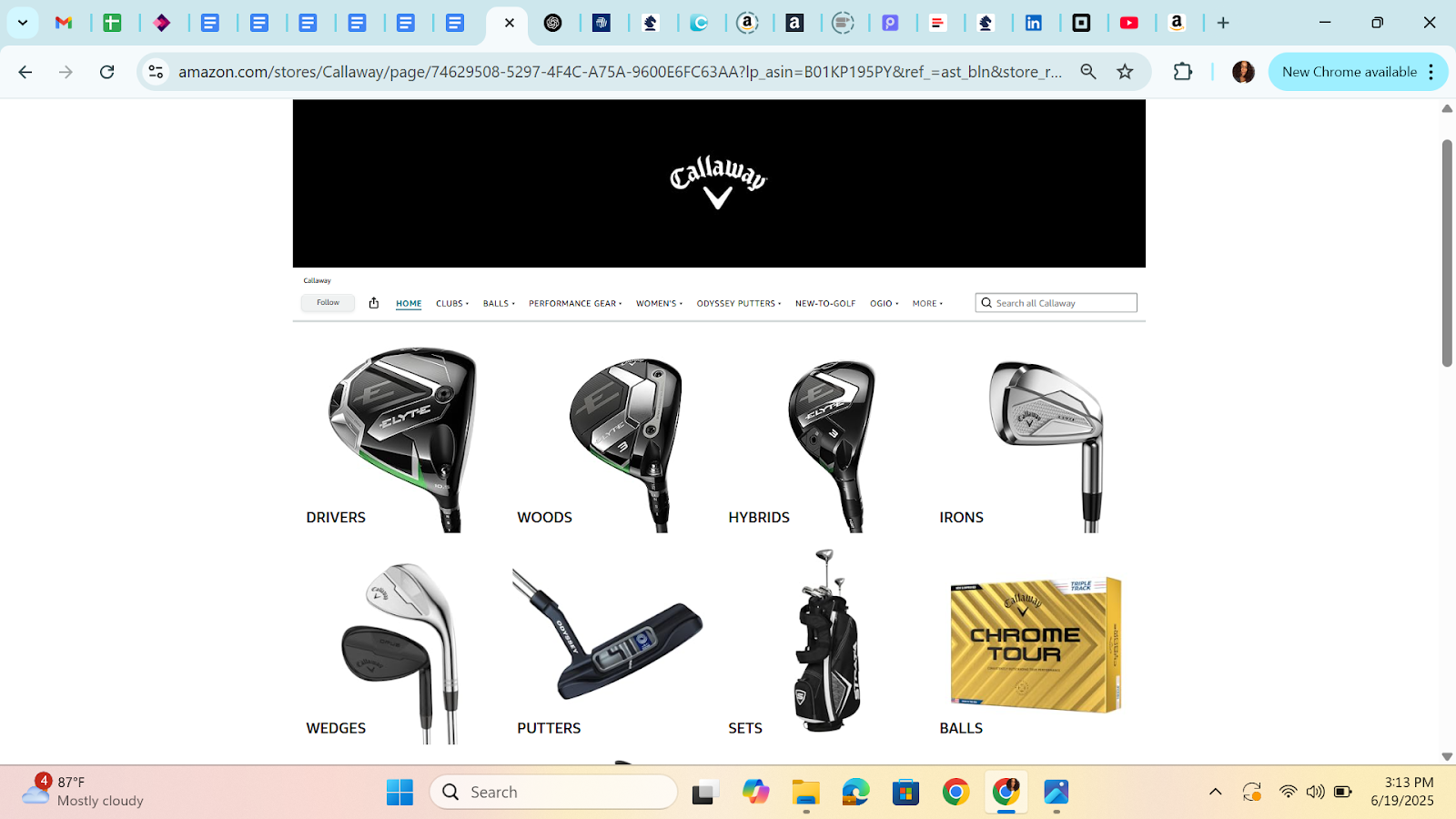
Merrick sets itself apart as a pet food brand offering high-quality, nutritious pet food. On their Amazon storefront, you are greeted with a beautiful homepage that immediately communicates the quality of the products.
Merrick highlights that it works with a team of professionals, including animal nutritionists and veterinarians, to produce the most nutritious pet food recipes. Scrolling down the store, you see a lifestyle video that plays in a loop. The store also has a product display alongside its prices. Merrick uniquely combines images, videos, and a list of products all in one, making their store stand out.
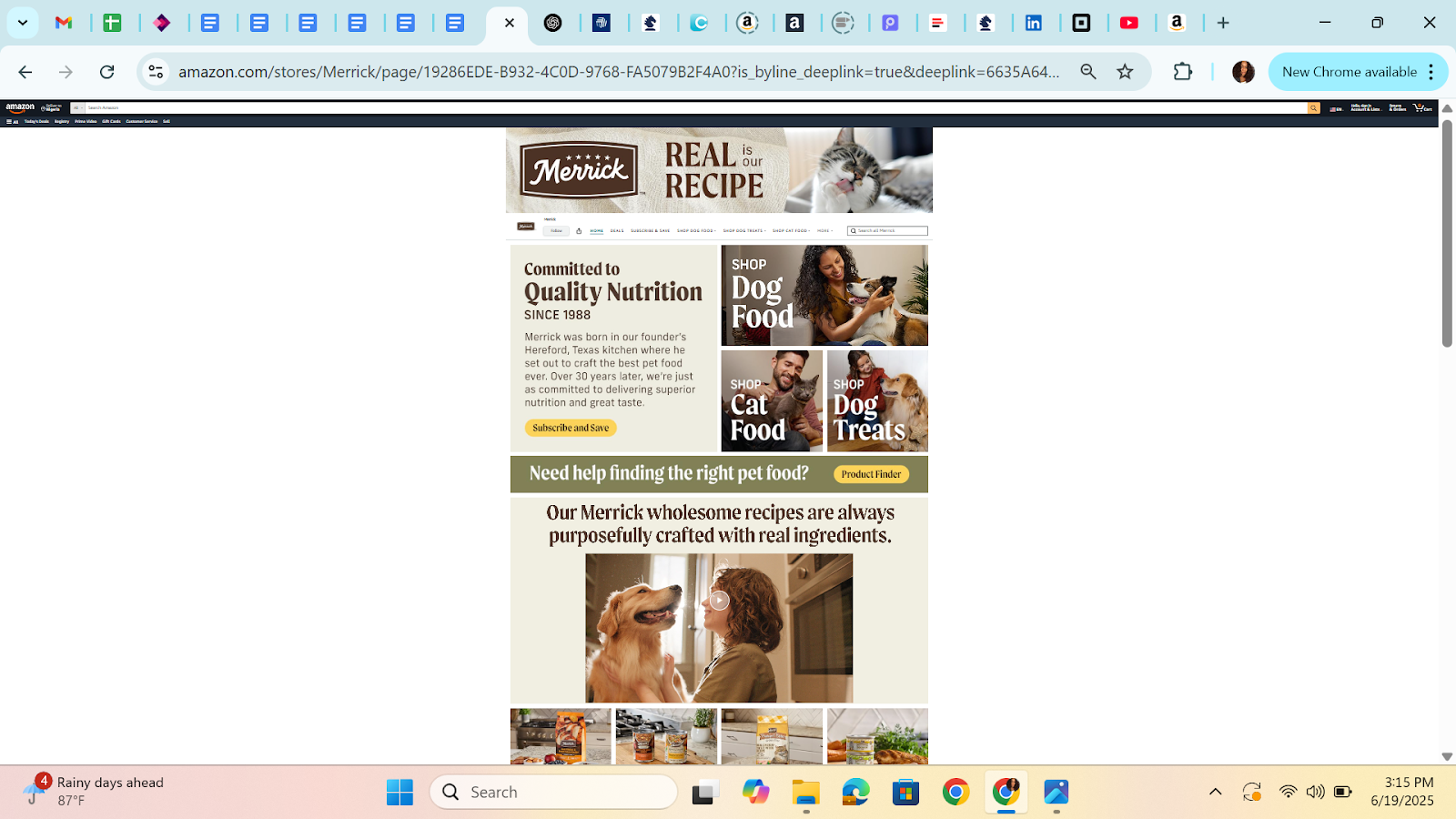
PK Grills is an outdoor grill brand that sells high-quality grills, gear, and grill accessories. Their Amazon storefront is filled with high-quality images and videos showing their grills in action. They highlight their product features and display best sellers you can shop from. They also have recommended products for you at the bottom of the page. The store has a user-friendly interface, making it easy for customers to pick a product.
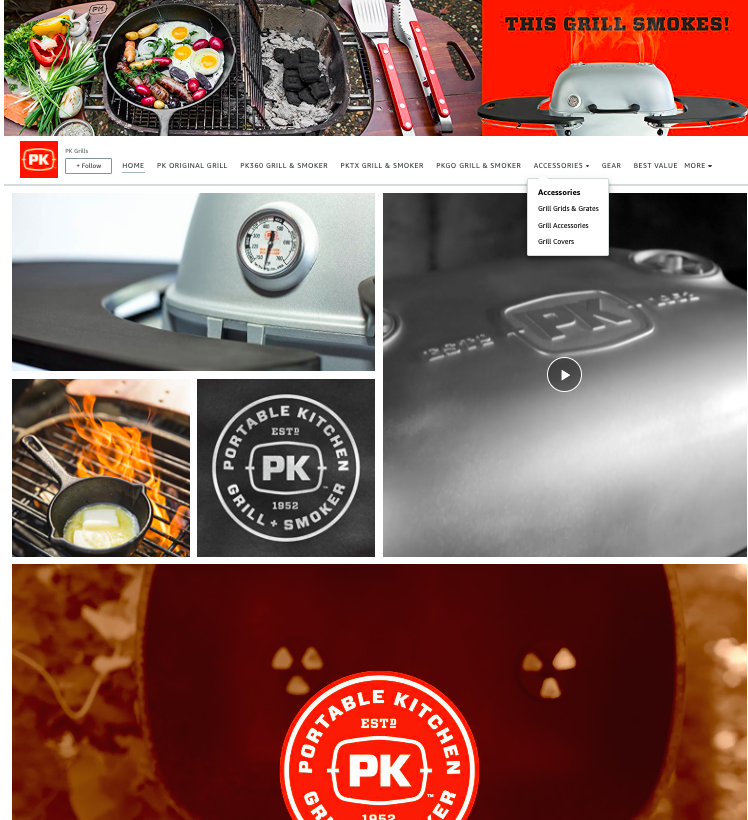
Your storefront isn’t just a display of products. It is a feature that allows you to connect with your customers, increase sales, and grow revenue with Amazon. So here are five tips on how to set up an Amazon storefront that is sure to impress your customers and increase sales on Amazon.
Amazon Global Selling is a program that allows you to sell your products in international markets. In addition to staples like the US, UK, and Canada, you can sell your products to countries like France, Italy, Germany, Japan, China, India, and many more. The program is fully supported by Amazon’s seller tools and logistics network to help you with currency conversion, product listing, international fulfillment, customer service, and many more.
With Amazon Global Selling, you can sell to top retail markets across the globe and expose your store to millions more customers. As the process of registration can be a bit daunting, we recommend you speak to an expert to guide you through the process.
The above Amazon storefront examples have a few things in common: high-quality images and videos, compelling copy and product descriptions, category tabs, a unique layout, branding for easy brand recognition, and easy navigation.
Do you want to build your Amazon storefront but need some professional guidance? With top ecommerce experts at ePlaybooks, you can get all the guidance you need to build an impressive, high-converting Amazon storefront and increase sales on Amazon.
One example of a storefront is an Amazon storefront, a customizable mini-website that Amazon sellers use to showcase their brand and products within Amazon. On Amazon, you will find storefronts from various brands like Nike, Lego, and Apple. Other storefront examples include the Etsy storefront and the Walmart marketplace storefront. Each storefront acts as a digital front door to the business, just like a physical store entrance in a shopping mall.
When choosing a name for your Amazon store, you need to consider these:
Choose a name that's easy to remember and spell. Avoid overly generic names.
Include a word related to your niche or product type if it adds clarity.
Do a quick search on Amazon and Google to ensure the name isn't already used.
Check USPTO.gov or international trademark databases to avoid legal issues.
Choose a name you can grow with, even if you expand into new categories later.
Your Amazon storefront tells your brand story and displays your product line, while your product listing focuses on selling one item at a time. A storefront is a custom-branded mini-website within Amazon, while a product listing is a single product page with title, images, bullet points, and price. While an Amazon storefront is available to Brand-registered sellers, a product listing is available to all sellers on Amazon.
Yes, you can use your Amazon Storefront URL to promote your products outside of Amazon, but with some important limitations and best practices. You can share your Storefront URL on social media, emails, blogs, YouTube, or ads, use it as a landing page, or link to it from your website or bio if you’re selling on Amazon.
However, you cannot sell or link to external websites (like Shopify, Etsy, or your own online store) from within your Storefront. You cannot use your Storefront to redirect customers away from Amazon or use off-Amazon links or info
You’ve probably already considered selling on Amazon but its way easier than you think.
Call Us Now